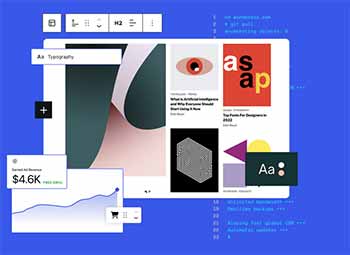 In the early days of blogging, WordPress was a breath of fresh air, clean, intuitive, and accessible. It promised simplicity in publishing and was quickly adopted by individuals and businesses alike. Fast forward a few years, and what was once a streamlined content management system has evolved into something far more complicated; some would say unnecessarily so. Today, WordPress feels less like a publishing tool and more like a labyrinth designed by developers with no real grasp of user experience.
In the early days of blogging, WordPress was a breath of fresh air, clean, intuitive, and accessible. It promised simplicity in publishing and was quickly adopted by individuals and businesses alike. Fast forward a few years, and what was once a streamlined content management system has evolved into something far more complicated; some would say unnecessarily so. Today, WordPress feels less like a publishing tool and more like a labyrinth designed by developers with no real grasp of user experience.
The new block-based editor, introduced several years ago under the name “Gutenberg,” was touted as a revolution. In practice, it feels like a puzzle built for those fluent in code logic, not for writers, editors, or even casual users. Laying out content with this system is often an exercise in frustration. For many, it has become a choice between popping a sedative or surrendering to the inevitable: installing third-party plugins like Classic Editor or Classic Widgets to return to something vaguely usable. These throwback tools, while imperfect and outdated, at least offer a sense of familiarity and functionality.
Admittedly, the old interface had its limitations, few would argue otherwise, but it succeeded where the current version often fails: it was simple, reliable, and efficient.
The irony is that improving the original interface would have required far less effort than the overhaul that led to the current chaos. Take, for example, the persistent confusion around “posts” versus “pages.” For most users managing a blog or website, pages are more intuitive, offering clearer navigation and structure. Posts, on the other hand, continue to be misused or misunderstood, a problem that could have been solved with a bit of thoughtful UX design.
Then there’s the issue of “categories”, a longstanding bugbear. Clicking on a category often leads to a dead-end page, baffling users and disrupting navigation. One wonders why developers didn’t implement a solution that simply reveals the associated menu items upon hover or click, a behavior that already works smoothly when triggered manually. Again, the problem isn’t that the system can’t do it. It’s that no one thought it through from the user’s perspective.
At its core, the evolution of WordPress reveals a troubling truth: the software is increasingly shaped by programmers thinking in terms of logic trees and code efficiency, rather than the human beings who actually use the platform. That disconnect is becoming harder to ignore, and it’s being voiced more loudly and frequently across the web.
Of course, WordPress is not the only content management system (CMS) out there. Alternatives exist, Drupal, for instance, is powerful and stable, if notoriously difficult to configure. Joomla, while also complex and clunky at times, offers more flexibility than WordPress and can be a viable option for experienced users. But here’s the catch: once you commit to a CMS, switching becomes a nightmare. Despite the existence of migration tools and plugins that promise seamless data transfers, the process is rarely smooth. In most cases, you’re going to need a developer on standby to clean up the inevitable mess.
For organizations like Bayou Blue Radio, the future may lie in a post-WordPress world, perhaps Drupal or Joomla, but only once a capable team of developers and designers is in place. The vision is clear: interfaces modeled after the simplicity of Microsoft Office, granting users access only to what they need, nothing more. But such custom environments require resources, expertise, and time, all of which point to a sobering reality.
The golden age of DIY website creation may be behind us. Today, building and maintaining a CMS is increasingly a job for professionals. What was once plug-and-play is now plug-and-pray, and the dream of easy publishing, for many, feels like a relic of a more innocent digital age.
By Thierry De Clemensat
Member, Jazz Journalists Association
Editor-in-Chief, Bayou Blue Radio
U.S. Correspondent – Paris-Move / ABS Magazine

